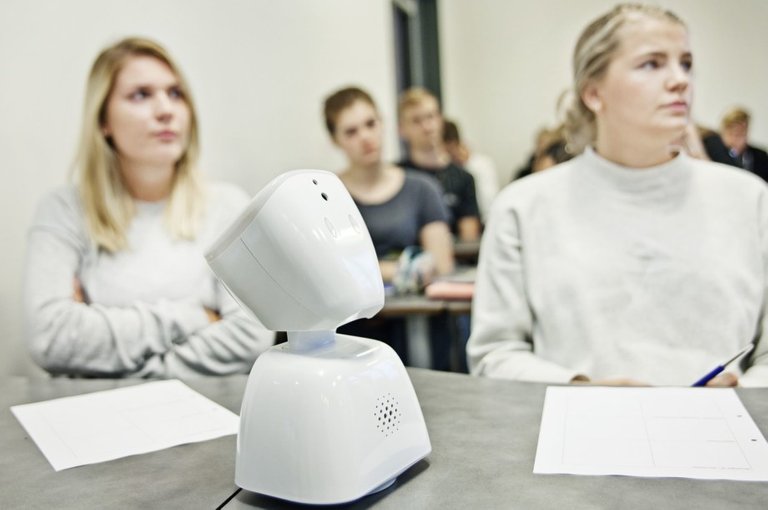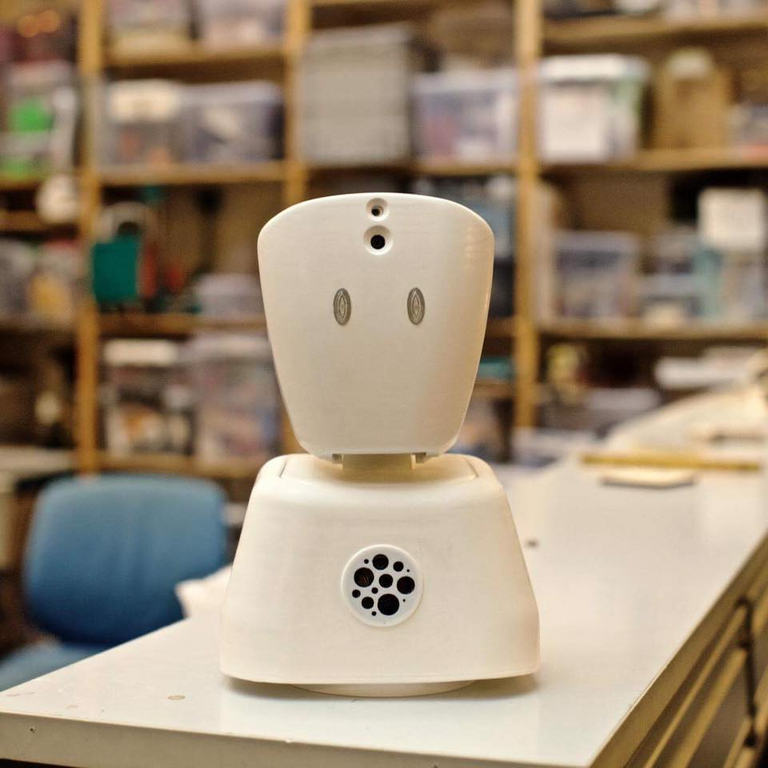
Written by Josie Miller on 4 June 2018
The Norwegian startup, No Isolation, developed a telepresence robot called AV1 that is transforming the lives of 400 children with long-term illnesses in Europe. Check out our interview with the innovators aiming to overcome human isolation with seeing-eye robots.
In a world of machines and computer screens, it can sometimes feel like we are losing our human touch. You could even go so far as to say that we humans are completely isolated by our machine-run lives. Children with long-term illnesses are even more so. They are not able to participate in everyday activities such as going to class and seeing friends— no wonder they feel blue. So, how does it figure that robots are the latest take on tackling this isolation? We asked the innovators of No isolation how they came up with AV1.
Kinder World: To get a better picture of the concept, what inspired the idea behind No Isolation and AV1? What problem specifically is the organisation hoping to address?
No Isolation: Karen Dolva, co-founder and CEO, had experienced loneliness herself when first leaving home and starting university. This personal experience sparked an interest in the topic, and after meeting Anne Fi, the mother of a young girl who suffered social isolation whilst going through cancer treatment, she decided to quit her existing job and do something about it, starting with kids long-term illness.

Wikipedia
Could you explain a bit about what the AV1 robot is and does?
AV1 acts as the eyes, ears, and voice for a child that is too ill to physically be where they want to be in their everyday life. The robot is controlled through the AV1 app on the child’s smartphone or tablet, it has a battery, WiFi antenna, 4G connection, camera, speaker, microphone and weighs only one kilogram. It is placed in the classroom or wherever the child needs to be, but can’t. These are the technical details. On the practical side, AV1 makes returning to school easier, as the social contact via AV1 bridges the gap made by long-term illness. The robot “sits” in the classroom, representing the child, and allows participation and engagement with teachers, friends, and family. In some cases, AV1 has even proven to speed up recovery.
What has the feedback been so far? Any hiccups? Any resistance to the idea? Or any unforeseen successes?
Though there has been some resistance from teachers, most people immediately understand the need for AV1 to help the child in question access their education. Overall, there has been a lot of positive feedback on how AV1 has changed the lives of the children using it.
The presence of AV1 seems to be a positive influence to children’s lives, successfully facilitating human communication. Jade Gadd, 17, Ehlers Danlos Syndrome patient, first AV1 user in the UK said, “I have security now because of AV1. She gave me hope in a very dark time. The best times I’ve ever had with AV1 have been when I didn’t even feel like I was using her. I just felt like I was really there.”
No Isolation is working on creating many more tools to combat loneliness and isolation from the world as a result of special circumstances. Keep your eyes open for more innovative technology that makes societies more integrated and happier.
This article was originally published at: https://www.kinder-world.org/articles/solutions/meet-av1-the-robot-that-goes-to-school-for-sick-children-who-cant-17899